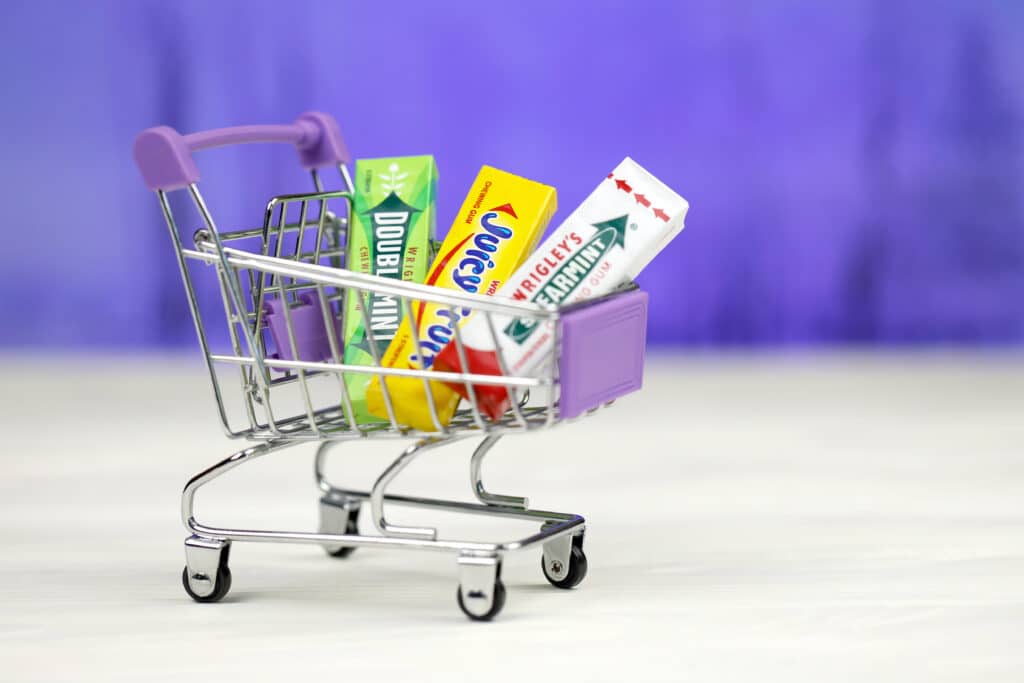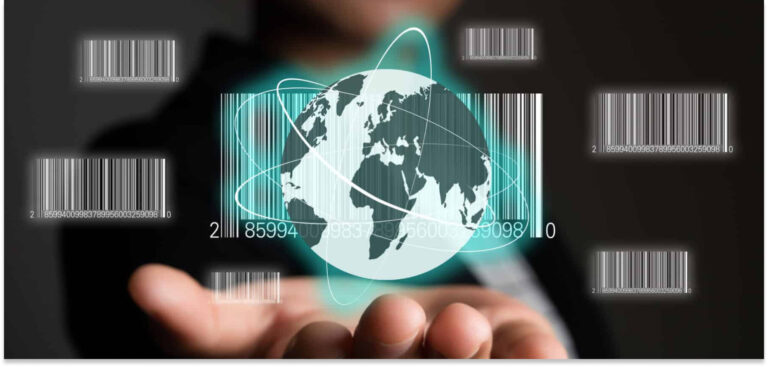Manual data entry slowed down processes in grocery stores
To most of us, retail is the most visible application area for barcodes. Everything we buy comes with a unique code. In North America, this is usually the Universal Product Code (UPC), whereas the rest of the world uses the EAN standard.
It was in the grocery industry, too, that the foundation for barcode technology was laid in 1948.
That year, Bernard Silver, a graduate student at Drexel Institute of Technology in Philadelphia, overheard a conversation between the president of Food Fair and the dean of his university. The grocery chain requested a technology for automated data collection at the checkout to speed up their processes and avoid human error.
Silver and his friend Joseph Woodland accepted the challenge. A first attempt using ultraviolet ink failed: The ink faded quickly, resulting in high costs. This forced the duo to abandon this idea.
Woodland, however, continued his work on the project. Inspired by Morse code, he drew his first barcode into the sand on the beach, creating lines of different widths. Once put on paper, they could be decoded by technology he adapted from optical movie soundtracks. For this, he used a 500-watt incandescent light bulb shining through the paper onto an RCA935 photomultiplier tube.
A year later, Joe Woodland and Bernard Silver filed a patent application for a “Classifying Apparatus and Method.” This included both the now-classic ‘linear’ symbology and a ‘bullseye’ form made of concentric circles, which could be scanned from any direction. It also described the systems required to read the barcode. On October 7th, 1952, the patent was issued.
Meanwhile, Woodland joined IBM and worked tirelessly to persuade the company to invest in the system’s development. In a report, IBM did eventually conclude the technology was relevant and feasible as such. Nonetheless, the idea was shelved, as there was no equipment yet capable of actually processing the data.
Discover how our clients saved time and money with the Scanbot Barcode Scanner SDK
1966 – the birth hour of UPC codes
The history of the first barcode continues in 1966, as the National Association of Food Chains (NAFC) met to discuss the idea of automated checkout systems. One of the participants was RCA, which had acquired the rights to the original Woodland patent. It subsequently developed a system using the bullseye barcode. The Kroger supermarket chain volunteered to put it through its paces.
In the mid-1970s, the NAFC launched the Ad-Hoc Committee for U.S. Supermarkets on a Uniform Grocery-Product Code, which established the guidelines for barcode development. In collaboration with consulting firm McKinsey, a subcommittee created a unified 11-digit barcode for product identification.
The committee then issued a contract tender to build a barcode system to print and read the code. The request was sent to RCA, IBM, National Cash Register (NCR), and others. They investigated several barcode symbol options: linear codes, RCA’s bullseye code, starburst patterns, and more.
In 1971, RCA displayed its bullseye code at another industry meeting. IBM executives noticed the crowds at the RCA booth and started working on their own system, involving Joseph Woodland.
Meanwhile, RCA’s trial in a Cincinnati Kroger store hit a serious snag. During its 18-month run, barcodes were printed on small strips of adhesive paper. Store employees manually attached these to the products along with the price tags. The issue: The printers occasionally smeared the ink on the circular code – which made it unreadable from most angles.
Linear codes, like Woodland’s, proved much easier to print. Recognizing this, IBM developed five versions of UPC using linear barcodes, named UPC-A, B, C, D, and E, for different industrial applications. Today, UPC-A is the default barcode found on products in North America.
The UPC’s debut in a commercial setting finally came on June 26, 1974. NCR had set up a test system at a Marsh Supermarket in Troy, Ohio, near the factory producing the equipment. On that day, Clyde Dawson purchased a 10-pack of Wrigley’s chewing gum featuring a universal product code, and Sharon Buchanan scanned it at the checkout counter. The gum pack and the cash receipt are now in the Smithsonian museum.

Barcodes: versatile technology across industries & use cases
Nowadays, the entire supply chain, including inventory tracking, manufacturing, and delivery, relies on advanced barcode technology. The main use is the automatic identification of products, raw materials, and shipping units. New application areas require barcodes to store even more information (UPC-A codes are limited to 12 digits), leading to the invention of 2D barcode standards. Instead of black bars and white spaces, they use small dots or rectangles in a grid to store information vertically and horizontally. This two-dimensional storage allows a significantly higher data density. The QR code is currently the best-known 2D standard and can hold up to 7,089 numeric characters.



